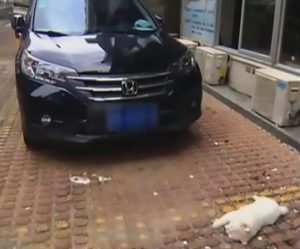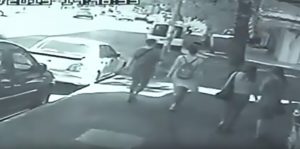Story By: Sibel Abdiu, Sub Editor: Joseph Golder, Agency: Asia Wire Report
The Victoria and Albert Museum says it is no longer possible to verify claims it allegedly purchased ancient tiles that had been ‘stolen’ from Turkey more than 150 years ago and which were discovered in their store rooms by a Turkish historian who took a wrong turn during a visit to the famous London site.
Picture Credits: AsiaWire
Hayal Gulec claims to have taken the wrong lift while touring the museum and ended up in a storage room where she spotted a treasure trove of historic glazed tiles dating back to the 16th century.
After further investigations, including talking to museum officials, she believes 44 of the tiles were taken from sites in Turkey including some long suspected of being stolen by a French restorer in 1863.
Now the museum could be asked to return the tiles as part of a long-running move by the Turkish government to recover relics and artefacts which have been taken from the country over the centuries.
A letter reportedly found in the same room appeared to be from the son of Leon Parvillee, a French expert who was hired to restore an earthquake-hit mosque and tomb in Bursa, in north-western Turkey, during the 19th century, but he was subsequently accused of stealing tiles.
The letter appears to confirm that Parvillee had offered to sell the tiles to the museum.
But in a statement to Central European News (CEN), a museum spokesman said: “The V&A makes its collections accessible to the broadest possible audience. We welcome hundreds of researchers to the museum each year, providing opportunities to study objects and to consult our archives, in addition to the online Search the Collections facility (www.collections.vam.ac.uk). In this way, we facilitated Hayal Gulec’s visit to the museum’s storage facilities in 2012, to support her ongoing research.
“The V&A’s archive includes records of purchase of a group of tiles that had once belonged to French artist, architect and ceramicist Leon Parvillee (1830–1885). Parvillee acquired tiles from Turkey and other parts of the Middle East as models for his own production. In 1892, after Parvillee’s death, his sons sold these tiles to the Victoria and Albert Museum (then the South Kensington Museum). As this was more than two decades after Parvillee is reported to have made his collection, this time lag means that the V&A’s archives cannot be used to trace the initial dispersal of the tiles in the 1860s.
“The museum’s policy is to be open and transparent about the way in which objects entered our collection, to promote partnership and collaborative research with their place of origin and – where appropriate – to provide long-term loans so that objects can also be enjoyed and studied in their place of origin.”
Gulec, an art historian from Turkey’s Suleyman Demirel University, was visiting the museum as a tourist when she stumbled across stacks of tiles in a storage room including glazed ‘cini’ tiles from the Ottoman era.
She made further visits to the museum and believes 44 tiles were taken on different dates over the years, the most notable being those which Parvillee had long been suspected of stealing but which had never been proven.
Other tiles in the stash included some taken from the famous Topkapi Palace, a mosque in Istanbul, a tomb in the south-eastern city of Diyarbakir and an ancient Armenian Catholic Church, all sold to the museum by different people.
The Turkish Culture and Tourism Ministry, which has recovered 4,311 artefacts from across the world since 2003 alone, must now decide whether or not to pursue a claim for the return of the tiles, although it can potentially become a long legal process.
Gulec, says her “sole aim is to bring back the artefacts to Turkey.”
It is currently unclear exactly how Gulec reached the conclusion that the tiles had been stolen. It is also unclear the authorities at the time were unable to prove Pavillee guilty.



